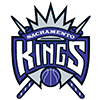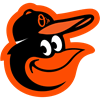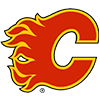If it seems like the catcher pool is better than anyone expected coming into the season, that's because it is. Depending on the valuation process employed and league format, in aggregate, the backstop pool is earning 10 to 15 percent more than initially projected. An average of RotoWire, Baseball HQ and Mastersball spring projections was used to compute initial anticipated earnings. Even with the improvements, the average earned per catcher still trails that of the other position players. In addition, the catcher replacement level remains wretchedly low, it's just that several receivers are earning more than projected.
What follows is the list of catchers performing better than projected in order of greatest increased earnings to date, with a brief review of their prognosis for the rest of the season. The numbers are derived from a 15-team mixed league using standard 5x5 rotisserie scoring.
Josh Phegley: Coming into the season, it wasn't clear how the Athletics would distribute the playing time behind the plate, with Phegley most likely earmarked for his typical small side of platoon duties. However, he hasn't exhibited significant splits in recent seasons and sure enough, it wasn't long before the veteran became the regular backstop. As it happens, Phegley is crushing southpaw pitching this season while remaining productive against righty throwers as well. He's well on his way to setting a new career high in plate appearances, something he could accomplish by the All-Star break or soon thereafter. Statcast metrics such as average exit velocity suggest
If it seems like the catcher pool is better than anyone expected coming into the season, that's because it is. Depending on the valuation process employed and league format, in aggregate, the backstop pool is earning 10 to 15 percent more than initially projected. An average of RotoWire, Baseball HQ and Mastersball spring projections was used to compute initial anticipated earnings. Even with the improvements, the average earned per catcher still trails that of the other position players. In addition, the catcher replacement level remains wretchedly low, it's just that several receivers are earning more than projected.
What follows is the list of catchers performing better than projected in order of greatest increased earnings to date, with a brief review of their prognosis for the rest of the season. The numbers are derived from a 15-team mixed league using standard 5x5 rotisserie scoring.
Josh Phegley: Coming into the season, it wasn't clear how the Athletics would distribute the playing time behind the plate, with Phegley most likely earmarked for his typical small side of platoon duties. However, he hasn't exhibited significant splits in recent seasons and sure enough, it wasn't long before the veteran became the regular backstop. As it happens, Phegley is crushing southpaw pitching this season while remaining productive against righty throwers as well. He's well on his way to setting a new career high in plate appearances, something he could accomplish by the All-Star break or soon thereafter. Statcast metrics such as average exit velocity suggest Phegley is enjoying some luck as evidenced by a .344 wOBA that far exceeds his .309 xwOBA, so look for the 31-year old receiver to slow down and perhaps lose playing time over the second half.
James McCann: McCann was acquired by the White Sox to back up Welington Castillo, but much like Phegley, he parlayed an early power surge into first-string playing time. While McCann may be blessed with a bit of good fortune, his underlying metrics have improved. As such, while he'll be hard-pressed to repeat his performance over the second half, McCann's baseline expectations are a tier higher than they were coming into the season. With Castillo out with an oblique strain, McCann's playing time should increase even more in the short term.
Roberto Perez: Talk about coming out of nowhere, Perez was shunned even in 12-team AL-only formats with two catcher spots coming into the season. After hitting 13 homers from 2016-2018, he's already matched that total in 2019. His .238 average seems low, but it's higher than his .211 career mark and on a relative basis, not as damaging in a fantasy sense since the league-wide average is down. Perez's 35 percent home run per fly ball mark is in Christian Yelich territory and can't be sustained. Considering Perez is a groundball hitter, expect his home run pace to hit the skids in a big way.
Omar Narvaez: Narvaez has always been able to hit for average, pairing excellent plate skills with an uncanny ability to crank line drives. This season, he's continuing to smack line drives at high levels while adding more fly balls in lieu of ground balls. Additionally, he's maintained last season's gains in HR/FB, resulting in a personal-best 10 long balls, one more than he stroked last season in about 100 more plate appearances. Half a season is too small a sample to decree Narvaez owns his new batted ball distribution, but it does appear he's trying to loft the ball (who isn't?), boding well for continued power.
Tony Wolters: Wolters has a 20 percent hard hit rate, 83.5 mph average exit velocity, zero barrels and a .353 BABIP. One of these things is not like the others.
Christian Vazquez: Vazquez did most of his damage in May, though his June numbers are better than normal, suggesting he's attained a new baseline -- just obviously not at last month's level. Statcast data supports the growth with increased exit velocity. Vazquez makes good contact though he rarely walks, so he could be subject to a cold spell if he begins to fan more. Big picture, the strong-armed backstop is an improved batter.
Jason Castro: Much of Castro's tempered expectations were due to not having a clear indication of how the Twins planned on dividing playing time behind the plate, with Mitch Garver and spring sensation Willians Astudillo also in the mix. In addition, like most of the other backstops discussed, Castro has enjoyed a power surge, posting a .514 slugging percentage, by far a personal best. Everything has fallen into place as Castro is whiffing less, hitting the ball harder and lifting it with greater regularity. Health will always be an issue, as will playing time with Garver also having a stellar season, but Castro is now mixed-league worthy.
Yasmani Grandal: Considering the switch to one of the best hitting venues in the league, Grandal's improved performance isn't a surprise. The reason he makes the list is he's evolved into a bell cow receiver, leading the league in playing time from the position. Assuming he stays healthy, Grandal should remain one of the top fantasy catchers in the game, in contention for the top overall spot.
Brian McCann: McCann is amid a renaissance campaign in his return to his original organization. The 35-year-old veteran is in a time-share with Tyler Flowers, sitting against southpaws while playing against most right-handers. A huge reduction in strikeouts along with an increased exit velocity and more grounders has buoyed an average that now threatens the .300 mark without sacrificing much power. At his age, it's hard to imagine McCann maintaining this pace the rest of the season, but he does benefit from frequent rest and almost always batting with the platoon advantage.
Mitch Garver: We're getting towards the lower region of the list, so the net improvements are lessening but still significant. Garver was a favorite for those wanting a "safe" option, though he's exceeded those expectations to the point he hits third in one of the most productive lineups in the league. Garver's .301/.386/.642 slash line is supported by underlying metrics, but it's also aided by Lady Luck. Assuming the heel injury forcing him out of Thursday's game isn't serious, he'll continue to be a solid mixed-league option, albeit with a likely fallback in performance, perhaps dropping Garver back down the order a bit.
Carson Kelly: Coming into the season, Kelly's career decimals were a lackluster .154/.227/.188, in a mere 154 plate appearances divided over three seasons. Obviously, no one believed that was his baseline, but until Kelly was given consistent playing time at the major-league level, expectations were kept in check. Thus far, one of the featured acquisitions in the Paul Goldschmidt deal has comported himself well, playing about half the time over the first half. The supporting metrics suggest this is a reasonable expectation, rewarding those counting on Kelly's pedigree to shine through.
Robinson Chirinos: On the surface, while Chirinos may be playing more and hitting with a little more power, nothing looks egregiously different until his runs and RBI are compared to his career clip. The combination of improved lineup and good timing has resulted in a bump in run production. It should remain elevated relative to previous seasons; however, the pace could wane.
Curt Casali: Casali's batting .280, with only four homers, 18 RBI and 14 runs. His inclusion is because he wasn't expected to play much with Tucker Barnhart coming off a campaign where he tied for second in games played behind the plate. Casali batted .293 last season in limited playing time because Barnhart also had a productive offensive season and is a superior defender. With Barnhart in a rut over the first half, Casali has been handed more playing time, already almost matching last season's amount while maintaining similar production. A simultaneous hot streak from Barnhart with a dip from Casali may cost the latter some action, but currently, the Reds seem set on getting Casali a decent amount of time squatting.
Willson Contreras: Contreras was a favorite to rebound from a subpar 2018 campaign and bounce back he has. The underlying Statcast numbers portend a pullback, especially in power, but overall Contreras should continue to reward those investing early in the productive backstop.



























